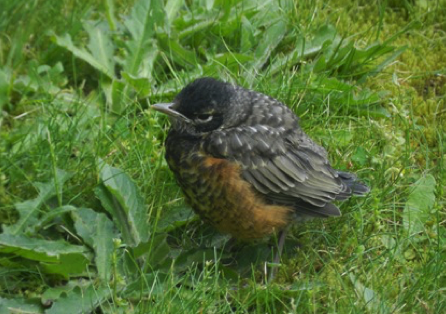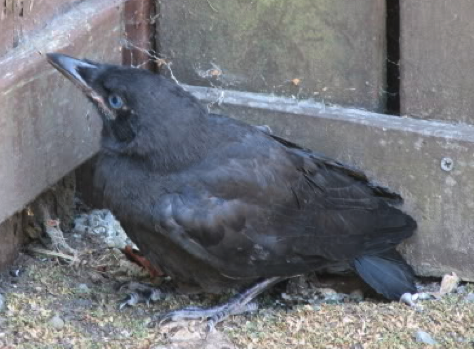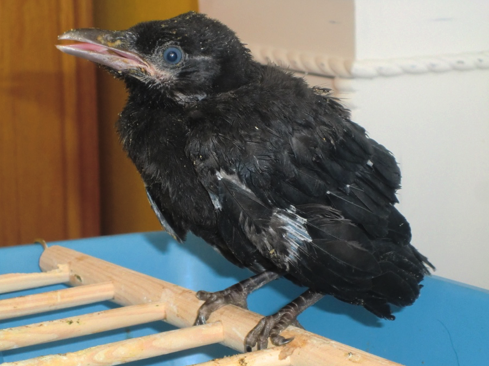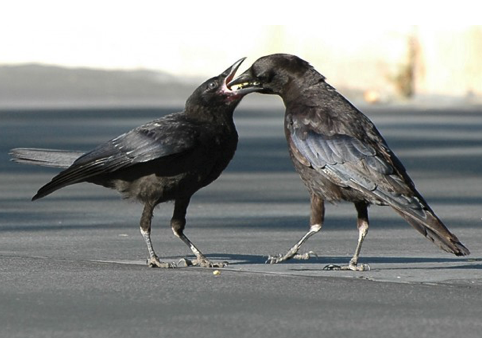Fledgling Birds
Fledgling Season
"Hello! Baby bird, what are ya doing there on the ground?"
A common question each spring that leads to many calls to Project Wildlife about "injured" or "disabled" flightless birds found on the ground. Primarily these downed birds are not injured, but they are fledglings leaving the nest for the first time. Nearly 90% of calls about "hurt birds" turn out to be these nonemergency situations.
Fledgling Guide
How do you determining whether or not a bird is actually injured or just a fledgling working on becoming airborne? Knowing the difference could help reduce the need for unnecessary response from Humane Officers. Since injured wildlife calls are our priority number one, it’s important to ensure the situation is an actual emergency. Below, we have provided some essential tips to assist you in making that distinction.
What is a fledgling?
A fledgling bird has reached the "fledge" stage of life, meaning the bird has feather and wing muscle development sufficient for flight and is no longer nest bound. In this life stage, the bird appears similar to an adult, except for a few differences.
Fledglings instinctively leave the nest on their own, or get kicked out by their parents, and are often found on the ground walking around. The bird may appear to be alone, but typically the bird's parents are nearby in trees and will continue to provide care while the youngster builds strength and works out how to fly properly. You may think baby birds leave the nest flying, but that’s simply not true. Most birds take a bit of time on the ground first. Finding a fledgling bird is not an emergency, rather a natural stage.
How to spot a fledgling?
Bird Can Walk but Can't Fly
It can be startling to find a bird on the ground and not in the air or a tree. However, if the bird can walk around freely, it is more likely to be a fledgling than an injured bird. Keep an eye on it.

Bird Hiding on the Ground
When a bird has been seen in the same place for a day or two and seems to be hiding in the bushes or somewhere out of sight or in a corner, it is most likely a fledgling. Injured birds are not as able to get to a good hiding spot.

Bird Looking Scruffy
During the fledgling stage a bird is often missing feathers and has a scruffy appearance. Often patches of bare skin appear to be missing feathers like in the photo below. This is because the bird is shedding the remaining downy soft feathers (which inhibit flight until they're shed).

Grounded Bird Being Attacked
Friend or foe? Typically the answer is friend. A bird's parents will continue to protect and feed their fledglings and this may appear to be a dive-bombing attack. When numerous babies are fledged in the same area, you may even find a flock of mom and dads protecting their young. Beware! A strong peck may await a person who gets too close.

Should I intervene?
How to Respond to Noisy Birds
Zero human intervention is best. Excessive chirping and squawking is common for young birds, and since this is a natural and common experience, the best response is no response at all. These are wild animals, and moving or impounding the bird is essentially kidnapping and orphaning it, and it will also deprive the bird of experience during a crucial point of its natural development.
While touching the bird will not cause the parents to reject it, messing around with a young bird too much still might permanently scare the parents away.
Abandoned Fledglings
In the event the parents have abandoned a fledgling, If the bird seems to be in a safe place like a bushy area full of foliage, the best advice is to leave the bird alone for another couple days and just monitor it to see if it leaves or not.
Please call 619-299-7012 with any other questions or to report an animal emergency.

